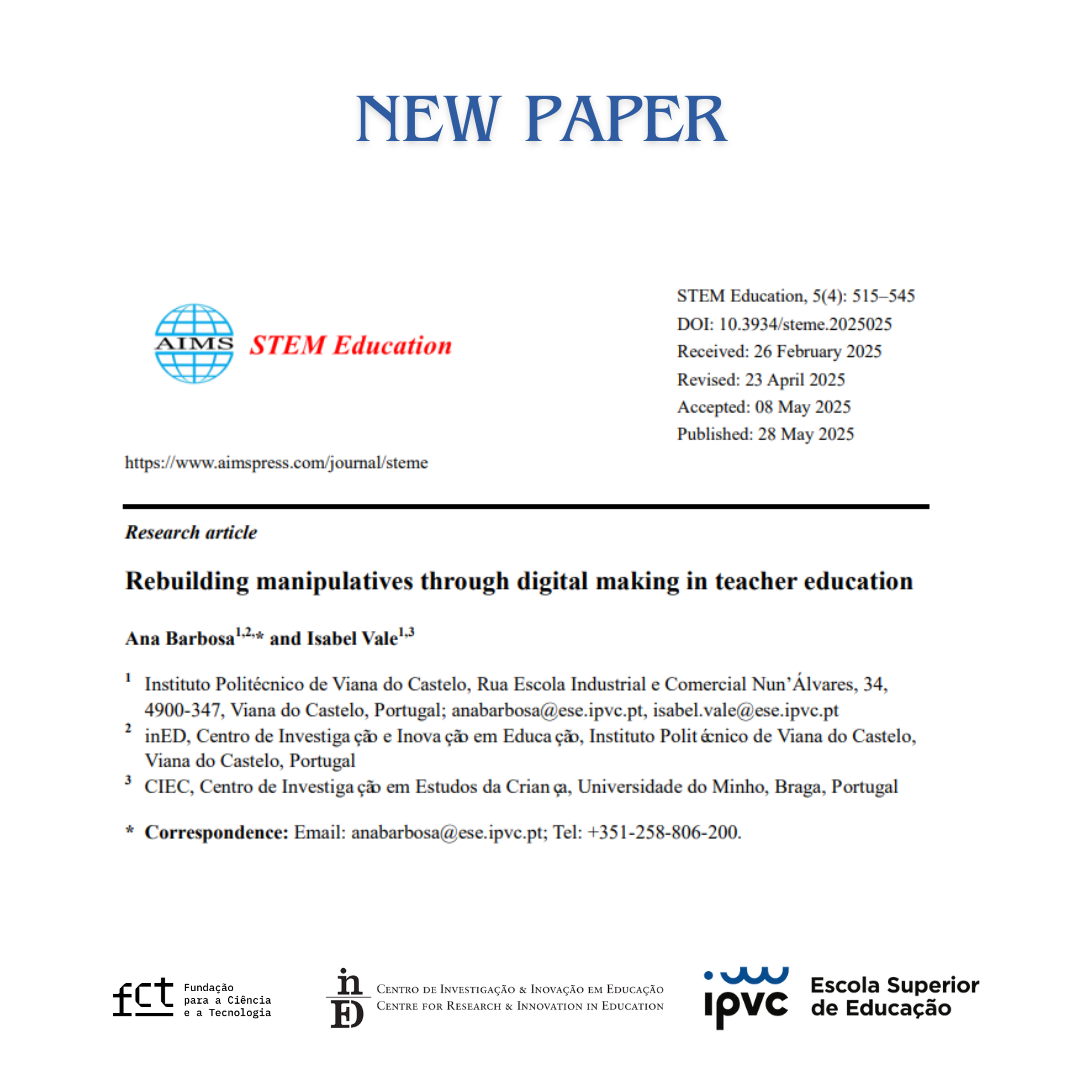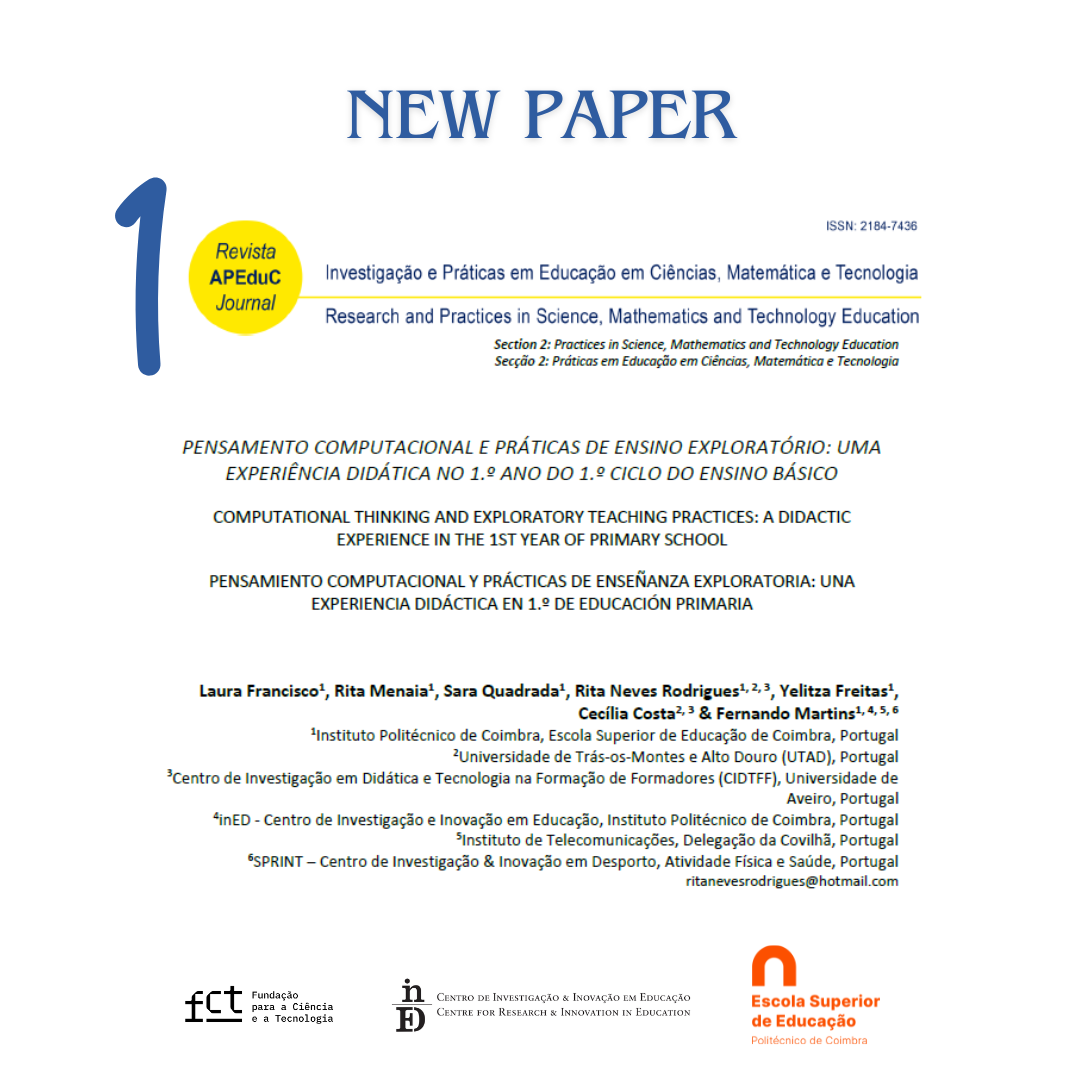 New article published in STEM Education
New article published in STEM Education
📐 Rebuilding manipulatives through digital making in teacher education
In the context of teacher education, we explored how future primary school teachers used digital tools such as Tinkercad and 3D printing to create personalised manipulatives for maths teaching.
The process involved creativity, testing and hands-on learning - helping to strengthen spatial reasoning, mathematical knowledge and pedagogical thinking.
🚀 Despite some challenges with accuracy and the curriculum, participants discovered the power of ‘digital making’ to promote active, interdisciplinary learning.
🔎The article is available for consultation: https://doi.org/10.3934/steme.2025025

 Articles published in APEduC Journal
Articles published in APEduC Journal
🧠💻 Article 1 - Computational Thinking in 1st Grade? Yes, it's possible!
Researcher Fernando Martins explored how computational thinking can be developed early in school through exploratory teaching practices.
👧👦 In a 1st grade class, students worked in groups on tasks related to pictograms and probabilities - learning to abstract, decompose, create algorithms and even recognise patterns!
📊 An innovative experience that shows how maths can be experienced actively, collaboratively and creatively from the earliest years!

![]()
![]() Article 2 - Mental arithmetic + digital games = learning with purpose!
Article 2 - Mental arithmetic + digital games = learning with purpose!
In the second article, researcher Fernando Martins shows how Serious Games from the Hypatiamat platform can help 1st grade students develop mental arithmetic skills.
🧮 Through exploratory teaching practices and interactive games, students not only improved their understanding of addition, but also learned to differentiate between instalments and sums - all in a playful and engaging way!
📈 An approach that combines technology, pedagogy and fun in maths teaching!

![]() 💡Article 3 - Computational thinking + statistical literacy with technology in the classroom!
💡Article 3 - Computational thinking + statistical literacy with technology in the classroom!
In his third article, researcher Fernando Martins presents an innovative practice with 4th-grade students, using the Hypatiamat platform to work on Data and Probability content.
🌿📈 Stem-and-leaf diagrams, mode, minimum and maximum were explored with digital support and exploratory teaching practices, promoting statistical understanding and computational thinking.
A clear example of how technology can enrich maths learning and make complex concepts more accessible.
🔗Full articles available: https://apeducrevista.utad.pt/index.php/apeduc/issue/view/34


